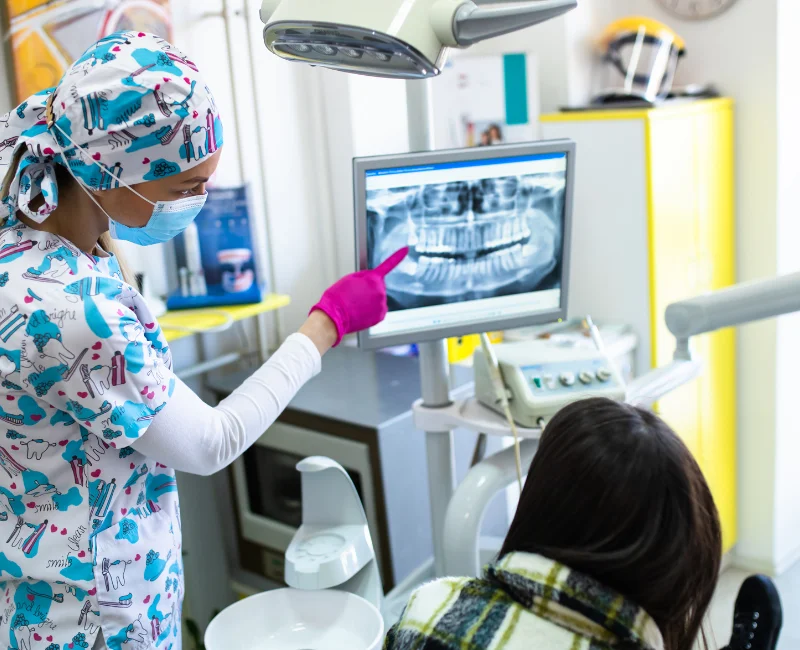Digital X-Rays

What Is A Digital X-Ray?
X-rays can penetrate the soft tissues of the face and mouth (such as lips and cheeks) but are absorbed by the hard tissues of teeth and bone. This characteristic enables dentists to detect oral health issues not easily visible externally. X-rays are primarily used to identify cavities, but they also help in examining tooth roots, evaluating the bone health around teeth, assessing potential periodontal (gum) disease, analyzing tooth and jaw alignment, and monitoring development in younger patients.
Type of Dental Digital X-Rays
Among the various types of dental X-rays, bite-wing X-rays are the most commonly used. Named after the wing-like shape of the films once used, these X-rays are taken while you sit in the dental chair and capture images of multiple teeth, including their roots. A dental team member will position a sensor in your mouth and ask you to bite down while aiming a tube-shaped device at your face. This device, known as the X-ray emitter, projects X-rays through your tissues onto the sensor. The process involves no light or heat, and typically, there is no discomfort associated with taking dental X-rays.
The Advantage of Modern Digital X-Rays
to schedule an initial consultation & exam.
Your consultation will include an examination of everything from your teeth, gums and soft tissues to the shape and condition of your bite. Generally, we want to see how your whole mouth looks and functions. Before we plan your treatment we want to know everything about the health and aesthetic of your smile, and, most importantly, what you want to achieve so we can help you get there.
